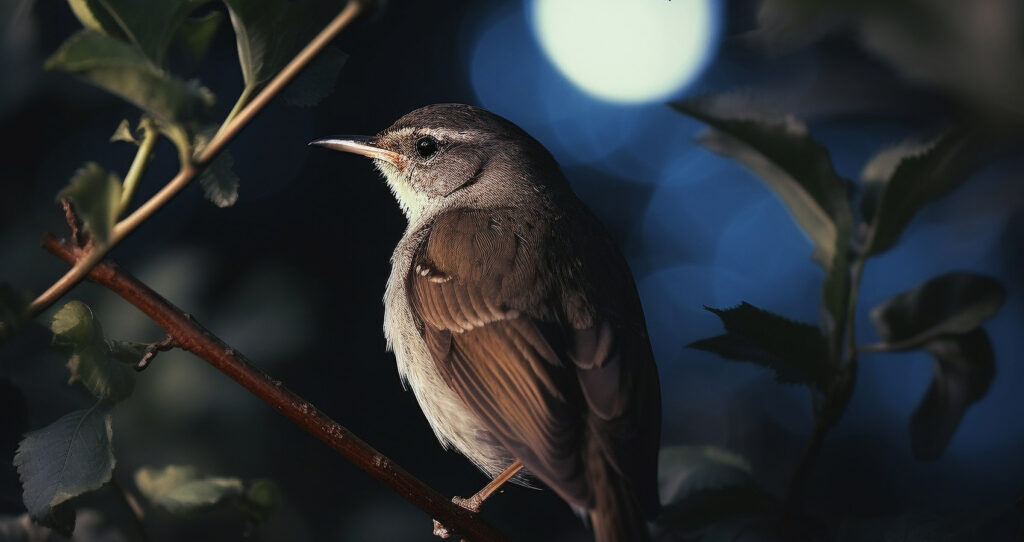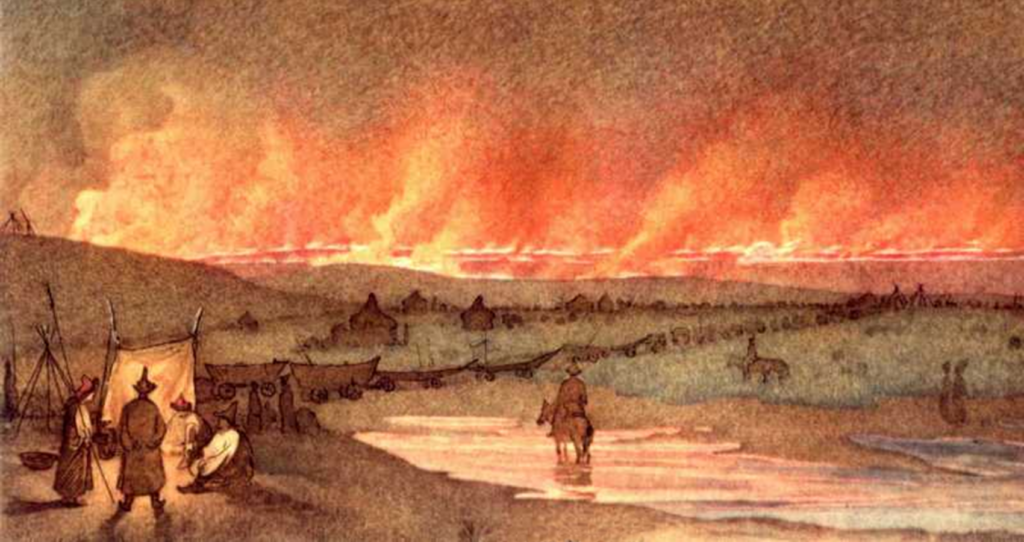
Holst, The Planets, Voyager 2, and a few Informal Observations
We are past the mid-point of the rehearsal cycle for our upcoming season finale, the details being worked are getting smaller and more subtle, and we’re simply getting more and more excited to finally launch into this journey. The music we’ll be playing is tremendously exciting in itself—two pieces by Ralph Vaughan Williams and one by Gustav Holst that match so well it’s no wonder they were BFFs.
In addition to the Seattle Girl’s Choir joining us for “Neptune” in “The Planets”, Cristina Valdes will be joining us as the soloist for the Piano Concerto in C by Vaughan Williams, a piece that will feature rhythms alternating between odd and even meters and, in general, a marvellous piece that’ll cap off the first half of the concert. I’ll let our resident Ralph Vaughan Williams fan, Maestro Stern, talk about them in greater detail in our video podcast!
We’ll be closing our 70th anniversary season with a most wonderful piece written by Gustav Holst, his orchestral suite “The Planets.” There are some really fascinating connections we can draw from a few different sources. Written between 1914 and 1916, Holst seemed to show some hints of clairvoyance, particularly in subtitling the first movement “The Bringer of War,” as it would only be a few years later that World War I would erupt. It might be easy to think this, but listening to the other planets, it’s fascinating to hear just how far ahead of his time Holst was in writing this music.
Take, for instance, Venus. If you look toward the west in the evening sky these days, Venus is usually the first to shine—a bright and dreamy point of light in the sky. If you get a chance, listen to Holst’s musical rendition of “Venus” while looking at the planet set against the sky and you might see just how fitting his music is with the visual. Then, if you’re feeling into it, Jupiter is also shining prominently in the evening as well, appearing not too long after Venus begins to shine. Holst called Jupiter “The Bringer of Jollity,” so let your imagination have some fun listening to that movement!
Given those two examples, it’s pretty clear what Holst has done—he’s musically characterised each of the known planets of his time. The first movements of his orchestral suite will visit the planets of the inner solar system (Mars, Venus, and Mercury), after which Holst takes us on a tour of the planets in the outer solar system (Jupiter, Saturn, Uranus, and Neptune). Why didn’t he write about Pluto? Pluto wasn’t observed until 1930, 14 years after he wrote “The Planets”. On that note of clairvoyance, as it turns out, there was no need to do so, but I’ll save the topic of whether or not Pluto is a planet for others to debate 😉
As mentioned earlier, after we visit Mercury, Holst then takes us on a musical journey that visits Jupiter, Saturn, Uranus, and Neptune and in that order. This is quite fascinating because, from this point, if we look ahead just over sixty years on 20th August 1977, Voyager 2 was the first* of the Voyager probes to launch into space, embarking on a Planetary Grand Tour with Jupiter scheduled first on its list of fly-bys. Voyager 2 would then visit the other three planets with an itinerary that matched Holst’s musical Grand Tour. Okay so this is purely coincidence but it’s a conveniently fun connection to think about nonetheless—if anything, it gives us a fun parallel for our imaginations as we listen to the whole piece. It’s as if Holst and Voyager 2 were meeting up at Jupiter for what would be wonderful journeys of exploration.
Along this line of thought, meaningfully, we really are taking a journey to new places, especially for those in which this will be the first time they’ve heard some of the other planets…er…movements. We will all be making the journey with our imaginations as well as the thoughts and feelings the music will conjure inside of us–it’s exploration of music in its most pure form. In parallel, we had never closely observed the outer planets in the outer solar system before the Pioneer and Voyager probes, thus, in hearing some of these movements for the first time one can, in an abstract way, imagine what it might have been like to have been a mission scientist that started to see the first batches of data and images as the probe scanned and transmitted the data from each planetary encounter. We’ll be re-living this with music on the 30th!
Anyway, this whole “listen with your imagination” idea is only a friendly suggestion—more than anything else, we just hope you’ll enjoy the music!
In keeping with the thought of parallels, we can also draw another symbolic one with the journeys of the Voyager probes. Author Stephen J. Pyne wrote, “Voyagers’ window was tight…There was, as well, a cultural window, for five years earlier a Grand Tour would not have been technically possible, and five years later not politically feasible.” Essentially, the Planetary Grand Tour wouldn’t have been possible if it didn’t happen when it did, which, for us at the Seattle Philharmonic, is quite analogous to the fact that we wouldn’t be able to celebrate our 70th anniversary season with this concert at our current venue if it weren’t for you, our supporters.
We “launched” in 1944 and if it weren’t for your support of our orchestra at the right times (which, okay, is every season and unfailingly so), our mission would have ended long before this season.
70 seasons!
Like the Voyager probes, their missions started with a completely different group of people in comparison to those working on the Voyager mission today. Today we have a wonderful group of musicians that are different from the original founding members. There have been periods of cruising through space and time in this orchestra, and some really exciting points along the way as well, but today we’re here—and we’re here because of you. We can’t say how thankful we are about this fact: you’ve made it possible for us to share and discover all of this music.
So, again, thank you for making this possible (we’re not ashamed to keep repeating this).
Voyager 1 is now in interstellar space while Voyager 2 is in the heliosheath, also well on its way to interstellar space. Their signals are still heard by our Deep Space Network**, but much like how “Neptune,” the final movement in Holst’s orchestral suite and thus the final musical gesture of our 70th anniversary season, ends quietly, it very much ends with a feeling that is implying many more discoveries in the future–much like how the Voyager space probes, still, are very much exploring and sending new information. They have new science to transmit and we have new music to discover (and tried-and-true pieces to revisit and appreciate).
In Mr. Pyne’s book “Voyager: Exploration, Space, and the Third Great Age of Discovery”, he also made a very eloquent analogy that the Voyager probes “…looked back as they looked beyond.” We not only do this with the repertoire that Maestro Stern programs each season, we also can look back on the past 70 seasons to learn, but we will also look forward to many more.
To look ahead, we must thank you for being a key part of our story and for making it all possible.
As of this writing, we have one rehearsal to go; we sure hope to see you at Benaroya Hall on the 30th! If you’re still looking for tickets, you can try and find some at discount at LivingSocial or at Goldstar but act quickly–these deals will be ending soon!
~ = ~
* While it was the first of the two Voyager probes to launch, Voyager 2 was named as such because it would be passed by Voyager 1 (which launched 2 weeks later on 5 September 1977) and be the second of the two probes to reach Jupiter.
** If you want to see what our Deep Space Network (DSN) is “listening” to at any given time, here’s a fun site: https://eyes.nasa.gov/dsn/dsn.html. Occasionally you’ll see the DSN antennae receiving signals from Voyagers 1 and 2, but you’ll also see communications between the DSN and New Horizons, currently on its way to Pluto (it should get really exciting in July!).
You Might Also Enjoy
"Completely Novel and Ingenious": Brahms' Fourth
Jun 3, 2025
In this video, music director, Adam Stern, invites us to explore the music we are presenting at our final concert of the season, June 7, 2025 at 2:00 pm at Benaroya Hall.
Read More"Passionate and Fascinating": Schumann's Fourth
Mar 16, 2025
In this video, music director, Adam Stern, takes a deeper look at the music we are presenting at our upcoming concert, March 29, 2025 at 2:00 pm at Benaroya Hall.
Read More




